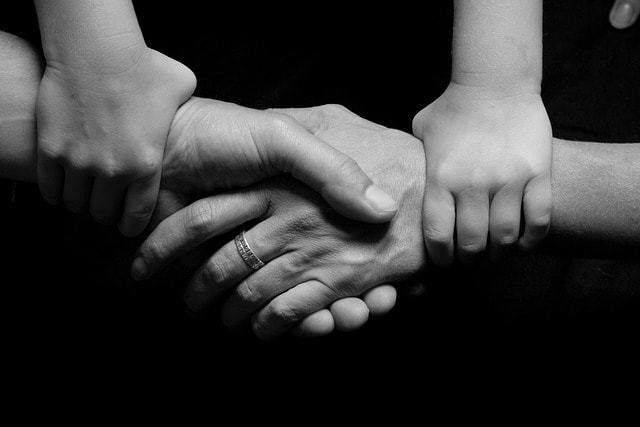Understanding Self Harm Relapse: Signs, Causes, and Coping Strategies
Self-harm relapse is a sensitive topic that requires understanding, compassion, and proactive steps toward recovery. Relapse does not signify failure; instead, it is part of the recovery process for many. Often, individuals turn to self-harm as a coping mechanism for negative emotions like anger and depression, struggling to process their emotional pain positively. By exploring the signs, causes, and coping strategies for self-harm relapse, individuals and caregivers can better navigate this challenging journey and work toward long-term resilience and a happier life.
What is Self-Harm Relapse?
A self-harm relapse occurs when someone who has previously stopped engaging in self-harming behaviors returns to those actions. Relapse can be triggered by overwhelming emotions, stressful life events, unresolved trauma, or underlying mental illness. It’s important to remember that self-harm recovery is not always a straight path. Relapses are a natural part of the process and should be met with self-compassion rather than guilt or shame. Viewing relapse as an opportunity to learn and grow is crucial for continued progress.

Signs of a Self-Harm Relapse
Recognizing the warning signs of a self-harm relapse is the first step toward addressing it effectively. Common indicators include:
Increased self-harming behaviors or urges to self-injure, highlighting the different types and patterns of self injury.
Overwhelming emotions, such as sadness, anger, or anxiety.
Feelings of guilt or shame about past actions or current struggles.
Noticeable changes in mood or behavior, including withdrawal from loved ones or a decline in self-care.
By identifying these signs early, individuals and their family members can take proactive measures to intervene and prevent further harm.
Causes of Self-Harm Relapse
Understanding what causes self-harm relapse is essential for prevention. Triggers can vary widely but often include:
Major life changes, recent trauma, or stressful events.
Negative feelings such as anger, loneliness, or hopelessness.
Low self-esteem or unresolved emotions from previous self-harming episodes.
Worsening mental health conditions, including untreated depression or anxiety.
Young people self-harm as a coping mechanism for various emotional struggles and mental health issues. Understanding these personal motivations is crucial for supporting individuals who engage in self-harm.
By uncovering the root causes, individuals can work on developing strategies to address these underlying issues effectively.
Understanding Self-Harming Behaviors
Self-harming behavior is often a coping mechanism to deal with emotional distress and is associated with various mental health conditions. While it may provide temporary relief, it ultimately exacerbates pain and challenges recovery. Self-harming behavior can stem from underlying mental illnesses such as:
Depression
Anxiety
Trauma or post-traumatic stress disorder (PTSD)
Self-harm takes various forms, including cutting, burning, hair pulling, or other intentional injuries. Understanding these types of self-harm can help individuals and caregivers identify appropriate support and resources.
The Link Between Self-Harm and Mental Health
Self-harm is often intricately linked to underlying mental health conditions such as depression, anxiety, borderline personality disorder, and post-traumatic stress disorder (PTSD). These conditions can significantly contribute to the development of self-harm behaviors, and in turn, self-harm can exacerbate the symptoms of these mental health issues. Addressing these underlying mental health conditions is crucial for effectively preventing self-harm relapses.
Research indicates that individuals who engage in self-harm are more likely to experience mental health issues, including depression, anxiety, and substance abuse. Self-harm can also be a symptom of more complex mental health conditions like borderline personality disorder and PTSD. Therefore, treatment for self-harm often involves addressing these underlying mental health issues to break the cycle of self-harming behaviors.
Mental health professionals play a pivotal role in helping individuals understand the connection between self-harm and mental health. They can assist in developing coping mechanisms and strategies to manage mental health effectively, thereby reducing the likelihood of self-harm relapses. By addressing both the self-harm behaviors and the underlying mental health conditions, individuals can work towards a more stable and healthier future.

Coping Strategies for Self-Harm Relapse
Developing healthy coping skills is crucial for managing and preventing self-harm relapse. These may include:
Identifying triggers that lead to urges to self-harm.
Building emotional resilience through therapies like dialectical behavior therapy or progressive muscle relaxation.
Creating a self-harm safety plan to stay focused on recovery goals.
Reaching out for professional help from mental health experts, trusted friends, or family members.
These strategies empower individuals to regain control over their emotions and actions, paving the way for long-term healing.
Building Resilience for Long-Term Recovery
Recovery from self-harm involves building resilience through:
Healthy coping mechanisms like mindfulness, journaling, or engaging in healthy activities.
A strong support network of friends, family, and mental health professionals.
Personalized recovery plans tailored to an individual’s unique circumstances.
Resilience is not about never facing challenges but rather about learning how to overcome them effectively.
Mental Health Support for Self-Harm Relapse
Professional mental health support is invaluable for those experiencing self-harm relapse. Therapists can:
Help individuals process the negative emotions underlying self-harm urges.
Teach effective coping skills for managing triggers and urges.
Provide a safe space to discuss challenges and celebrate progress.
Seeking proper support can provide the tools needed for lasting recovery and emotional stability.
Resources and Support for Self-Harm Recovery
Recovering from self-harm is a multifaceted journey that requires a comprehensive approach, including professional help, support groups, and self-care. Here are some valuable resources and support options available for self-harm recovery:
National Self-Harm Network: This helpline provides immediate support and resources for individuals struggling with self-harm, offering a lifeline in times of need.
RecoverYourLife: An online forum that offers a safe space to connect with others who are experiencing similar struggles, fostering a sense of community and understanding.
Cognitive Behavioral Therapy (CBT): A therapeutic approach that helps individuals understand and change negative thought patterns and behaviors, promoting healthier coping mechanisms.
Dialectical Behavior Therapy (DBT): This therapy focuses on developing coping skills and strategies to manage emotional distress, making it particularly effective for those dealing with self-harm.
Support Groups: Joining a support group can provide a sense of community and connection with others who are going through similar experiences, offering mutual support and encouragement.
It’s essential to remember that recovery from self-harm is a journey, and it’s okay to take things one step at a time. Reaching out for help is the first step towards recovery, and there are many resources available to support individuals on their path to healing.

Seeking Professional Help for Self-Harm Recovery
Seeking professional help is a critical step in recovering from self-harm. A mental health professional can provide the necessary support to understand the underlying causes of self-harm behaviors and develop effective coping mechanisms and strategies to manage mental health.
Here are some reasons why seeking professional help is vital for self-harm recovery:
Safe and Non-Judgmental Space: Professional help offers a safe and non-judgmental environment to discuss self-harm behaviors and underlying mental health issues, fostering open and honest communication.
Personalized Treatment Plans: A mental health professional can help individuals develop a personalized treatment plan that addresses their specific needs and circumstances, ensuring a tailored approach to recovery.
Tools and Strategies: Professional help provides individuals with the tools and strategies needed to manage their mental health and prevent self-harm relapses, promoting long-term stability.
Accountability and Support: Seeking professional help also offers a sense of accountability and support, which can be essential for maintaining progress and motivation during recovery.
Common types of therapy for self-harm recovery include:
Cognitive Behavioral Therapy (CBT)
Dialectical Behavior Therapy (DBT)
Mindfulness-Based Therapies
It’s crucial to find a mental health professional experienced in working with individuals who self-harm. With the right support and treatment, individuals can recover from self-harm and develop healthy coping mechanisms to manage their mental health effectively.
Creating a Self-Harm Safety Plan
A self harm safety plan is a proactive approach to preventing relapse. It typically includes:
Awareness of situations or feelings that may lead to self-harm.
Removing harmful items like sharp objects and replacing them with safer alternatives to express emotions.
Using distraction techniques such as exercise or creative outlets.
Having a safety plan ensures that individuals are prepared to manage difficult emotions effectively and safely.
Preventing Future Relapses
Preventing future relapses requires ongoing effort and adaptability. Key strategies include:
Exploring healthier ways to cope with intolerable emotions.
Recognizing that recovery is a journey, not a destination.
Continuing to seek support and build resilience over time.
It’s essential to find personalized approaches that work for each individual, as there is no one-size-fits-all solution.
Conclusion
Experiencing a self-harm relapse does not mean failure—it is simply a part of the recovery journey. With the right support, coping skills, and safety plans, individuals can work toward lasting healing. Encouraging empathy, understanding, and professional guidance can make all the difference in overcoming self-harm and achieving a brighter, healthier future. If you or a loved one are struggling, don’t hesitate to seek help and take the next steps toward recovery.






